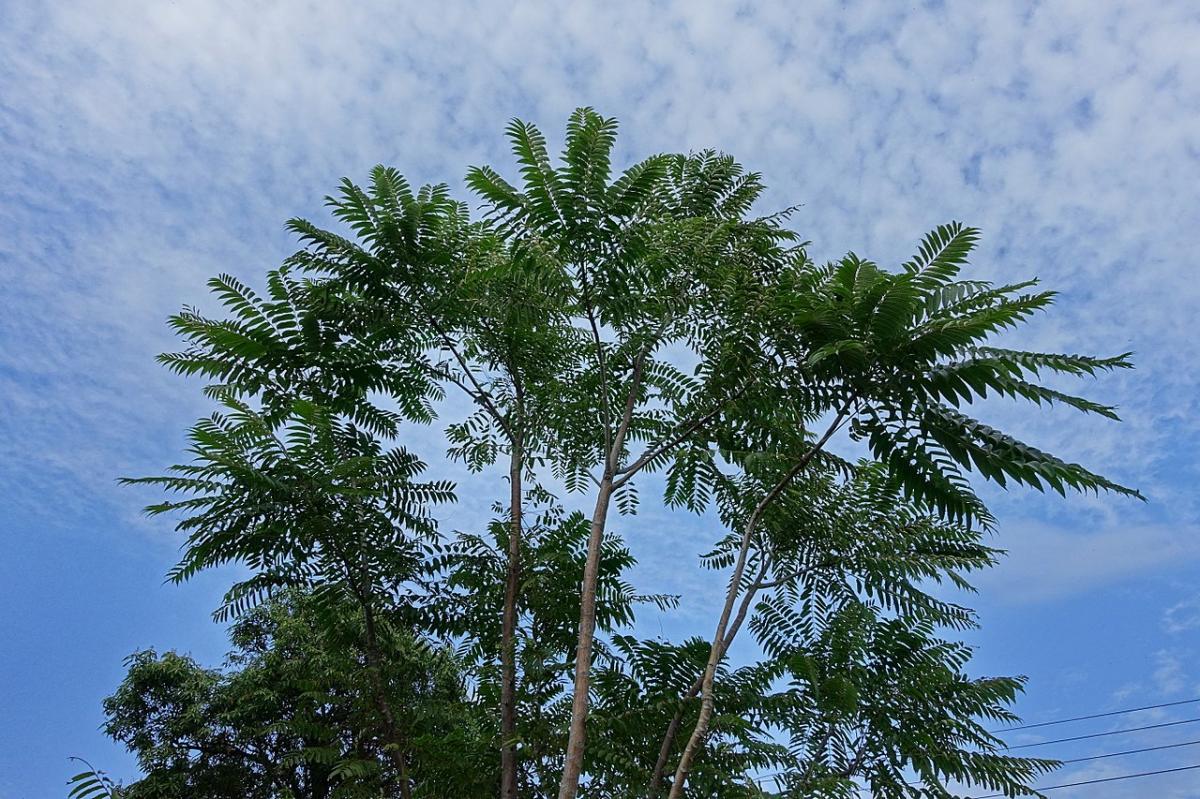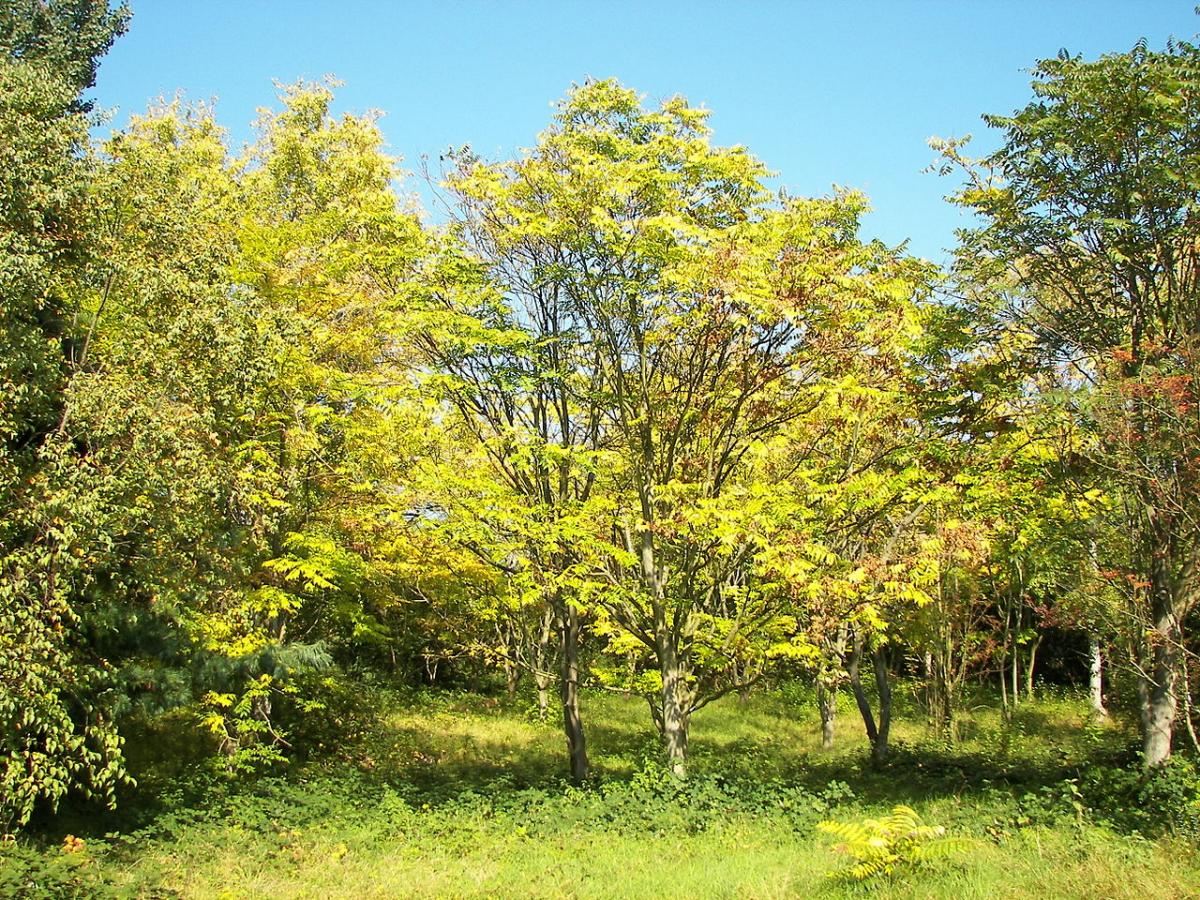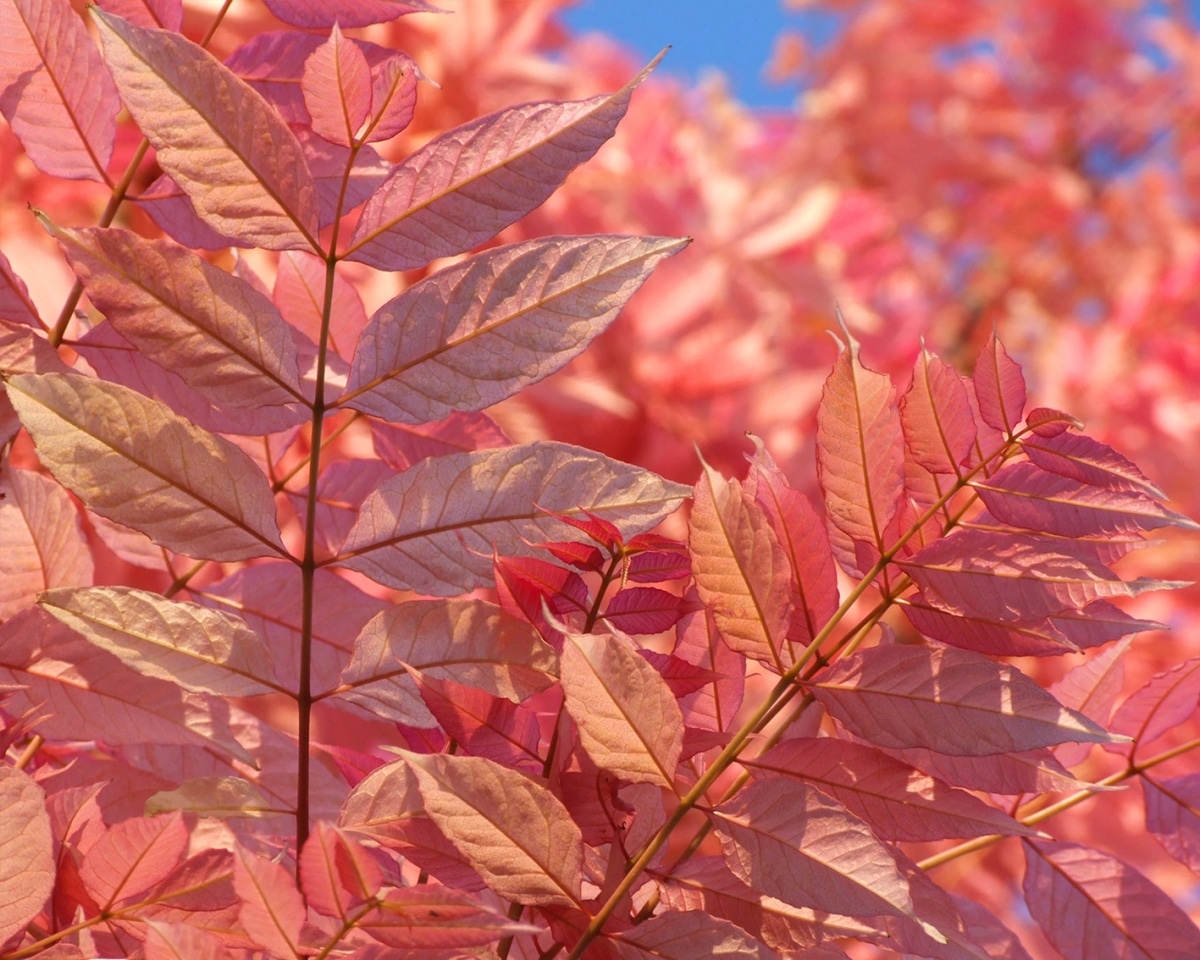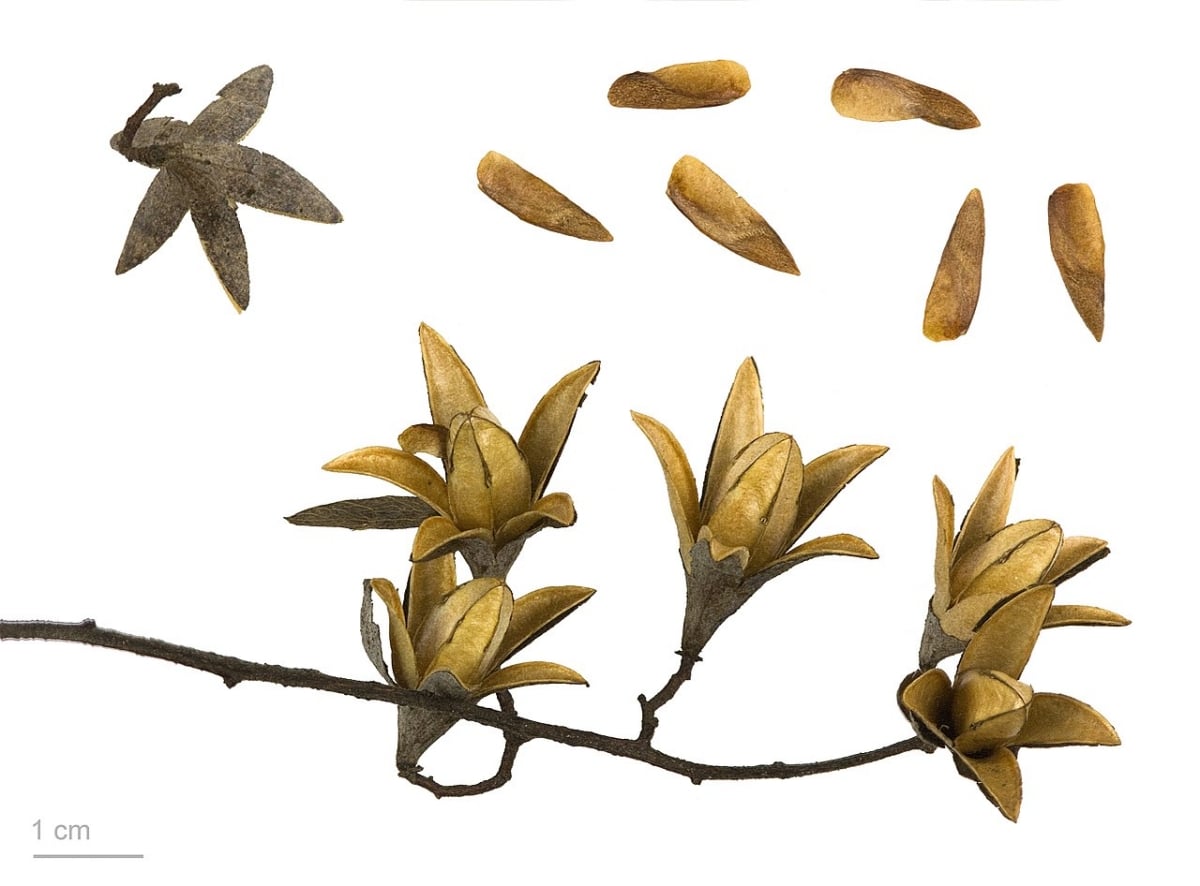
Image – Wikimedia/Mk2010
La toona sinensis it is a tree that, when seen for the first time, is easy to confuse with ailanthus. Luckily, it doesn't grow as fast as he does, nor is it invasive. In fact, if it is grown in warm climates (or with winters that are not too cold), its growth rate is quite slow.
But even so, I think that it is a species that should be talked about more, since it is a fantastic plant to have in temperate gardens. What's more, has no fear of frost.
How is the toona sinensis?

Image - Wikimedia / Willow
La toona sinensis, formerly known by the scientific name Cedrela sinensis, and popularly called Chinese mahogany or Chinese cedar, is a deciduous tree that, apart from being found in that country, also grows in Nepal, Myanmar, Malaysia, Thailand, North Korea and Indonesia. It reaches 25 meters in height with a trunk of about 70 centimeters in diameter.. Its bark varies over the years: first it is brown and smooth, and later it becomes scaly.
Its leaves are pinnate, and measure approximately 70 centimeters long by 40 centimeters wide. once the specimen is adult. These are green except in autumn when they are yellow, but in the toona sinensis 'Flamingo' you have them pink in spring, green-whitish in summer, and yellow-orange in autumn.
The flowers are pink or white. They are grouped in terminal panicles, and are about 40 centimeters long. Blooms in summer if environmental conditions allow. And the fruit is a capsule about 3 centimeters long that contains small winged seeds.
What is?
outside of their places of origin, used only as an ornamental plant. Whether as an isolated specimen, in rows or even in small groups, it looks very beautiful in a garden. It withstands frost very well, so its cultivation is interesting in those places where winters are cold.
But within his native region, its leaves are used as a vegetable and wood to make musical instruments, such as electric guitars.
How to differentiate Chinese cedar from ailanthus?
As we said at the beginning, it is very easy to confuse the ailanthus with Chinese cedar. But you have to know how to differentiate them since they have certain characteristics that are very different:

Image – Wikimedia/I, Doronenko // Data Sheet toona sinensis.
- Ailanthus:
- Height: between 15 and 30 meters.
- Bark: gray and cracked. Adult specimens have a more brown-chestnut color.
- Leaves: green and pinnate, composed of eight pairs of leaflets. In autumn they can turn red. They emit an unpleasant odor.
- Yellow flowers.
- Fruit: it is a samara.
- Life expectancy: short, about 50 years.
- chinese cedar:
- Height: 25 meters.
- Bark: brown and smooth.
- Leaves: green and pinnate; they do not always have a terminal leaflet. In autumn they turn yellow.
- Flowers: pink or white.
- Fruit: it is a capsule with winged seeds.
- Life expectancy: between 60 and 80 years.
What does the toona sinensis to live?
Now that we know the tree in depth, it is time to know what its needs are to see whether or not we can successfully grow it in our garden:
Climate
The climate it has to be temperate, with mild summers and cold winters with snowfall. In addition, it needs high ambient humidity so that its leaves do not dehydrate.
If it's grown in warm regions, even if it's frosty in winter, it's going to spend a lot of time trying to adapt, and then it's going to grow but at a very, very slow rate.
Location
It is a tree with long roots. I myself have a specimen that at the time of writing this article is only 10 centimeters tall, and I had to plant it in a large pot 40 centimeters in diameter by more or less the same depth because it could no longer grow in the I was.
For this reason, it should be planted as far away as possible from areas where there are pipes, and from soils with loose pavement. So that there are no problems, I recommend planting it at least 10 meters from these.
Sun or shade?

Image – Flickr/Sarah Macmillan // toona sinensis 'flamingo'
It will depend a lot on the weather. If it is in the Mediterranean, for example, it will be better in the shade because in summer the sun can burn it; but if the weather is mild, you can be in a sunny place without problems, as long as it is used to it, otherwise it will have to be acclimatized little by little by exposing it every day for a while (1-2 hours) to the king star.
Earth
The land in which it is planted must be light, with a neutral or slightly acidic pH. It does not tolerate waterlogging, so if the soil has poor drainage, it will have to be improved first, either by mixing the soil with, for example, perlite, or by making a 1 x 1 meter hole and then adding a layer of about 30 x 30 centimeters of volcanic clay or clay, and then finish filling it with growing substrate for plants.
It is not possible to keep it in a pot throughout its life, but if you are going to sow seeds and/or want to keep it in a short period of time, you can use universal substrate as this. Of course, if the weather is hot, I recommend coconut fiber more so that the roots can hydrate well during the summer.
Subscriber
You can pay your Chinese mahogany during spring and summer, either with organic fertilizers such as compost or guano, or with fertilizers for green plants.
Multiplication

Image - Wikimedia / Roger Culos
La toona sinensis multiplies by seeds. They have to be sown in winter so that they germinate a few months later, in spring. It can be done in seedbed trays by putting a maximum of two seeds in each alveolus, and leaving them outside, in semi-shade.
Then you only have to treat them once a week or every 15 days with fungicide that contains copper (such as this) so that the fungi do not rot them, and water when the soil dries up.
Pests
In the absence of more information, what I can say is that snails eat the leaves with great pleasure. During the rainy season, or soon after, they come out and tear up the foliage. If the specimen is an adult, nothing happens, but if it is young, things change, since it can run out of leaves.
For this reason, it is worth applying an anti-snail and slug product as soon as we see that there is a forecast of rain.
Management
When it is over-watered, it receives more water than it needs and/or the soil does not have good drainage, the roots can rot as a consequence of the water, but also of the opportunistic fungi They take advantage of their weakness to attack them. When this occurs, the root system can become necrotic, with gray or whitish mold, and must be treated with systemic fungicides.
Rusticity
La toona sinensis resists frost down to -20ºC. But keep in mind that if you are going to grow it in climates with very hot summers (with temperatures of 30ºC or more), its growth rate will be very slow.
What did you think of this tree?